JRuby is an implementation of the Ruby language that runs on the Java Virtual Machine. It allows Ruby code to access Java libraries and APIs and Java code to call Ruby methods. Some benefits of JRuby include access to mature and stable Java platforms, libraries, and tools as well as improved performance from features like garbage collection. JRuby also allows Java shops to introduce scripting and Ruby skills.
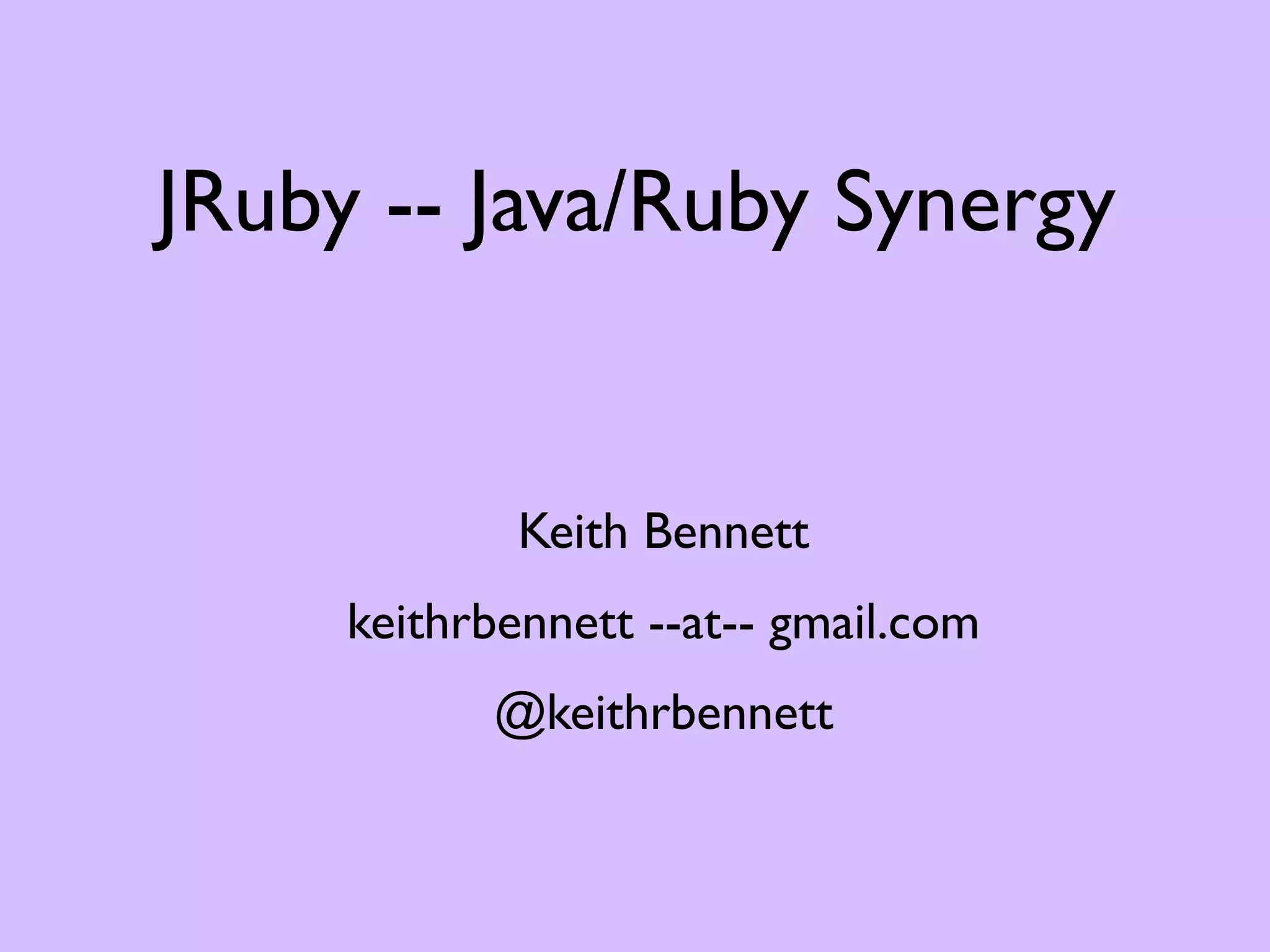


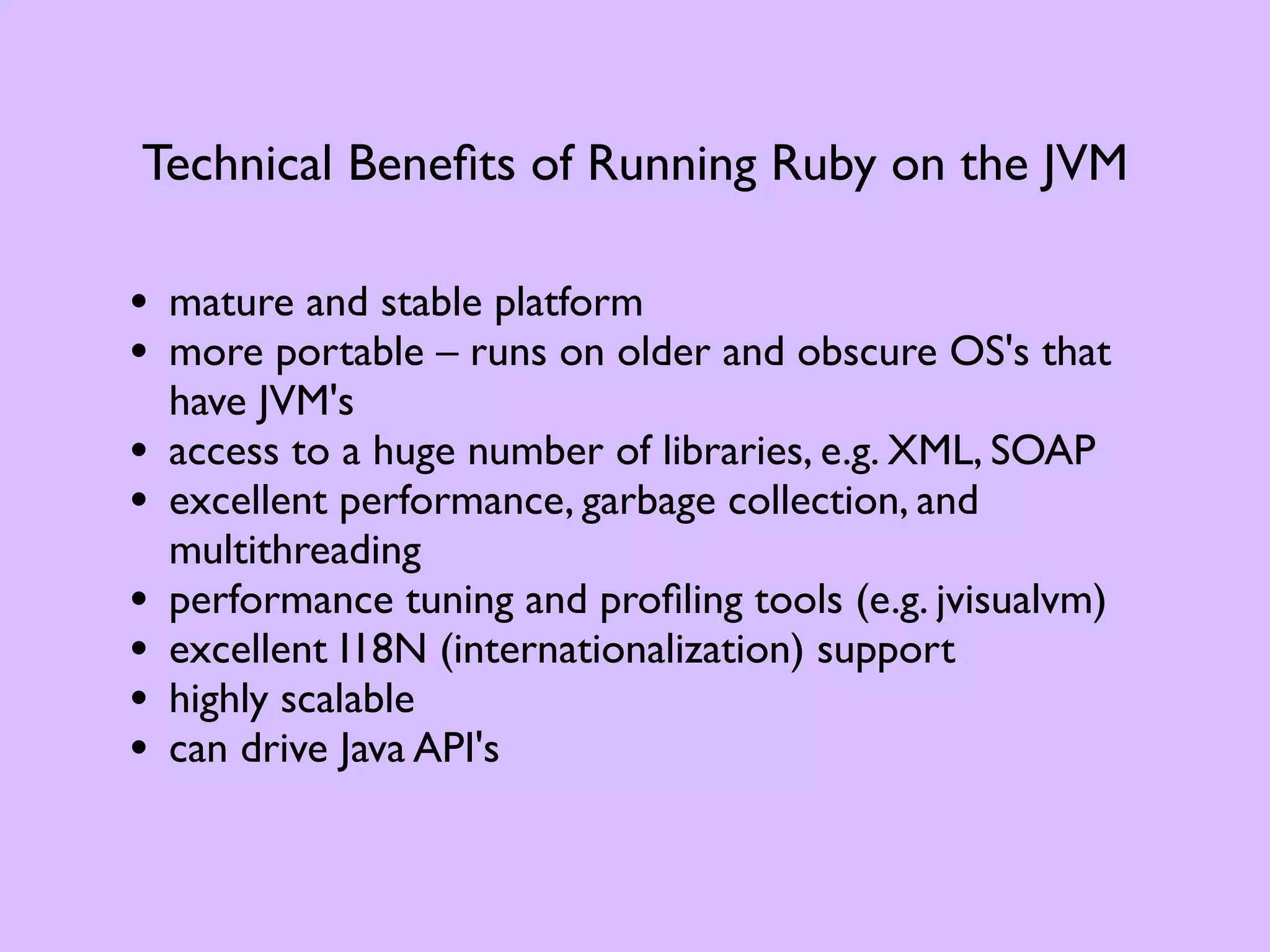
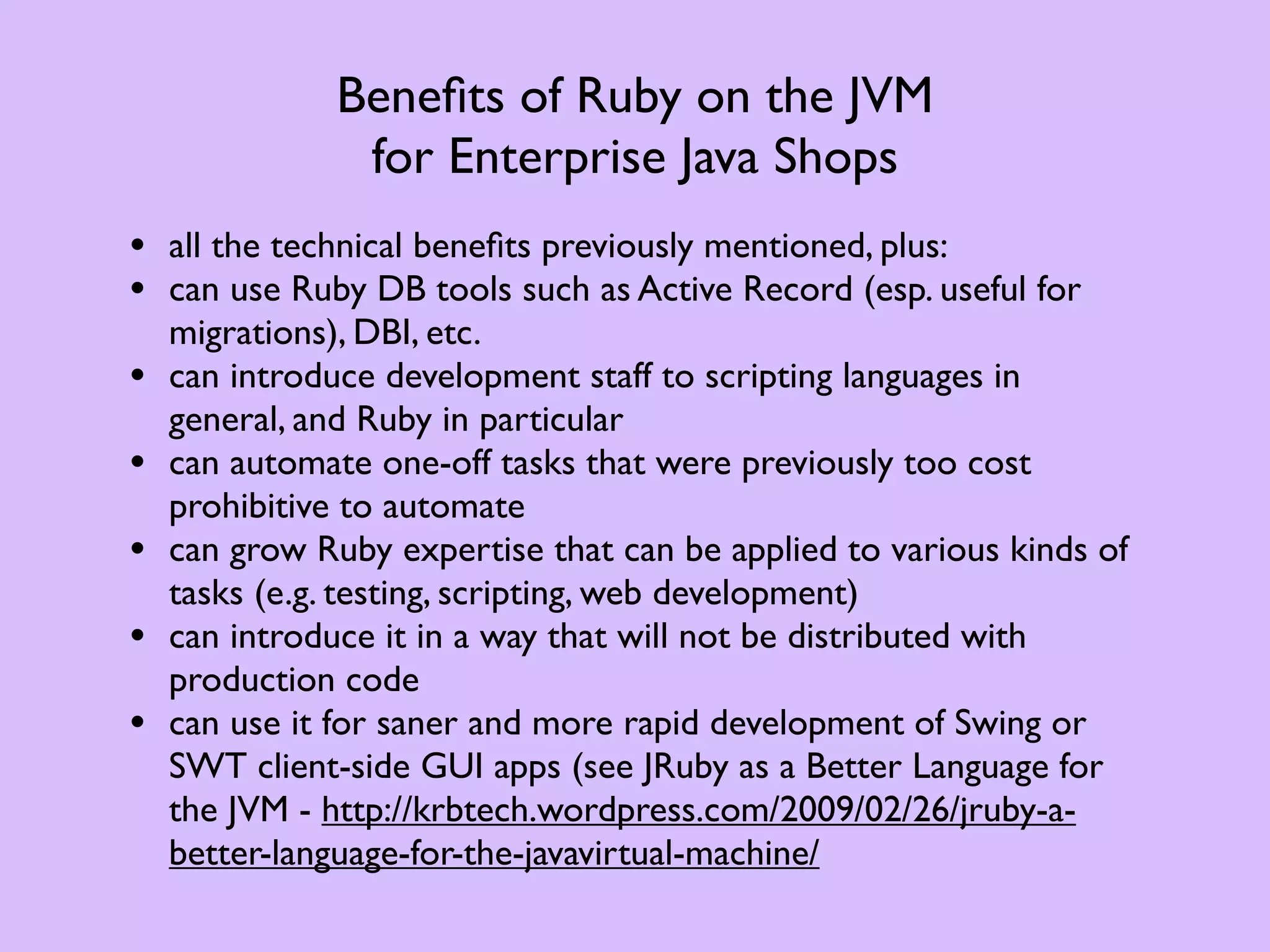
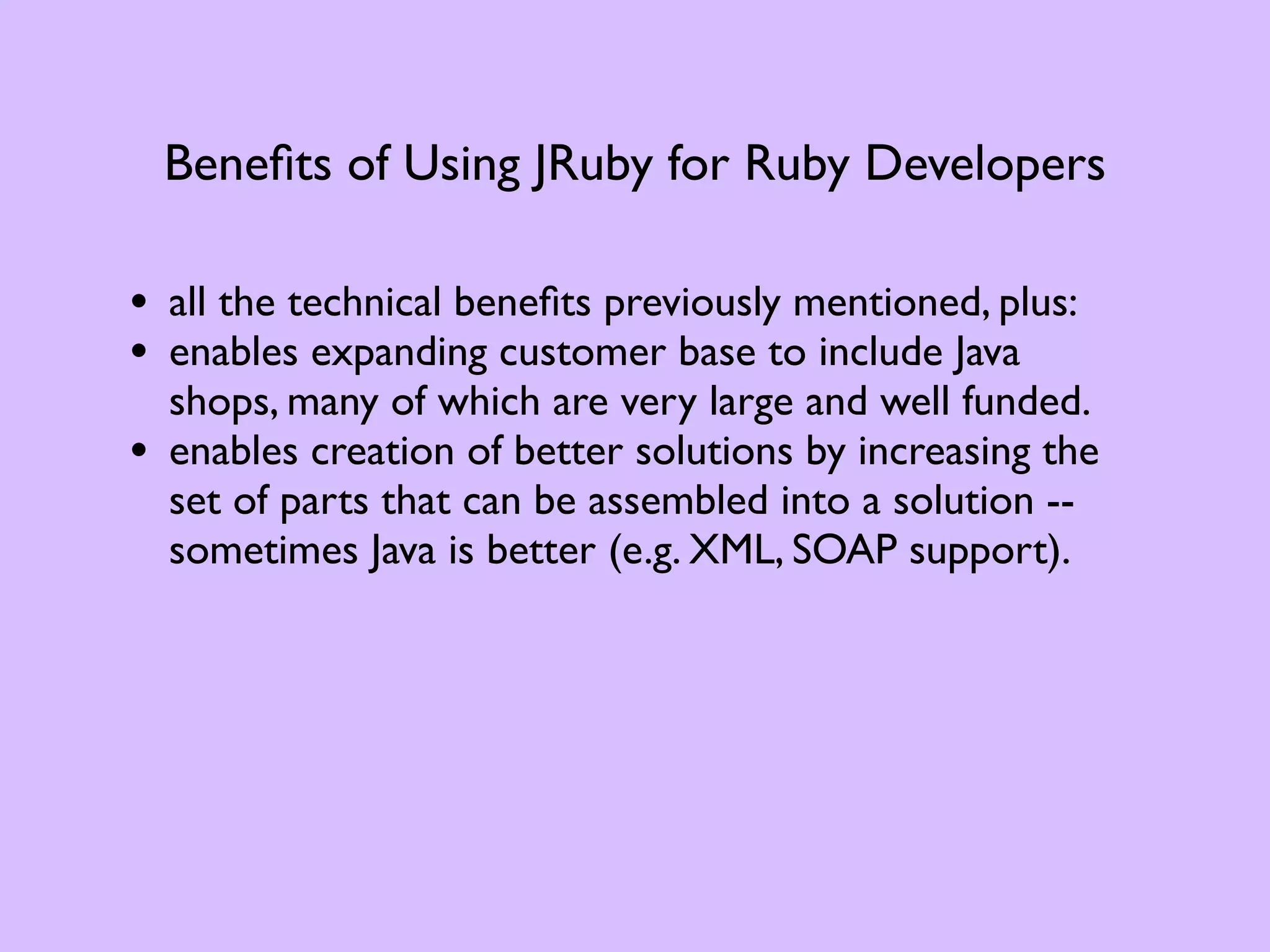


![JRuby Method Generation JRuby generates snake-cased named methods for Java camel-case named methods, and conventional reader and writer methods à la attr_accessor: # The java.util.Locale class contains only getDefault and setDefault. # JRuby adds the others: jruby-1.6.5 :003 > puts Locale.methods.sort.grep /[Dd]efault/ default default= getDefault get_default setDefault set_default Also, JRuby makes the Enumerable interface available to some kinds of Java objects, enabling the above, and the following: Locale.iSOCountries.each { |country_code| puts country_code } Locale.iSOLanguages.each { |language_code| puts language_code }](https://image.slidesharecdn.com/jruby-synergy-of-ruby-and-java-120428233726-phpapp02/75/Jruby-synergy-of-ruby-and-java-9-2048.jpg)

![Calling JRuby from Java import org.jruby.embed.ScriptingContainer; public class ScriptingContainerExample { public static void main(String[] args) { ScriptingContainer container = new ScriptingContainer(); container.put("$greeting", "Hello from JRuby!"); // optional // container.setLoadPaths(aJavaListOfDirectories); // optional container.setCompatVersion(org.jruby.CompatVersion.RUBY1_9); // optional container.runScriptlet("puts $greeting"); } } // >javac -cp ".:$JRUBY_JAR" ScriptingContainerExample.java // >java -cp ".:$JRUBY_JAR" ScriptingContainerExample // Hello from JRuby!](https://image.slidesharecdn.com/jruby-synergy-of-ruby-and-java-120428233726-phpapp02/75/Jruby-synergy-of-ruby-and-java-11-2048.jpg)


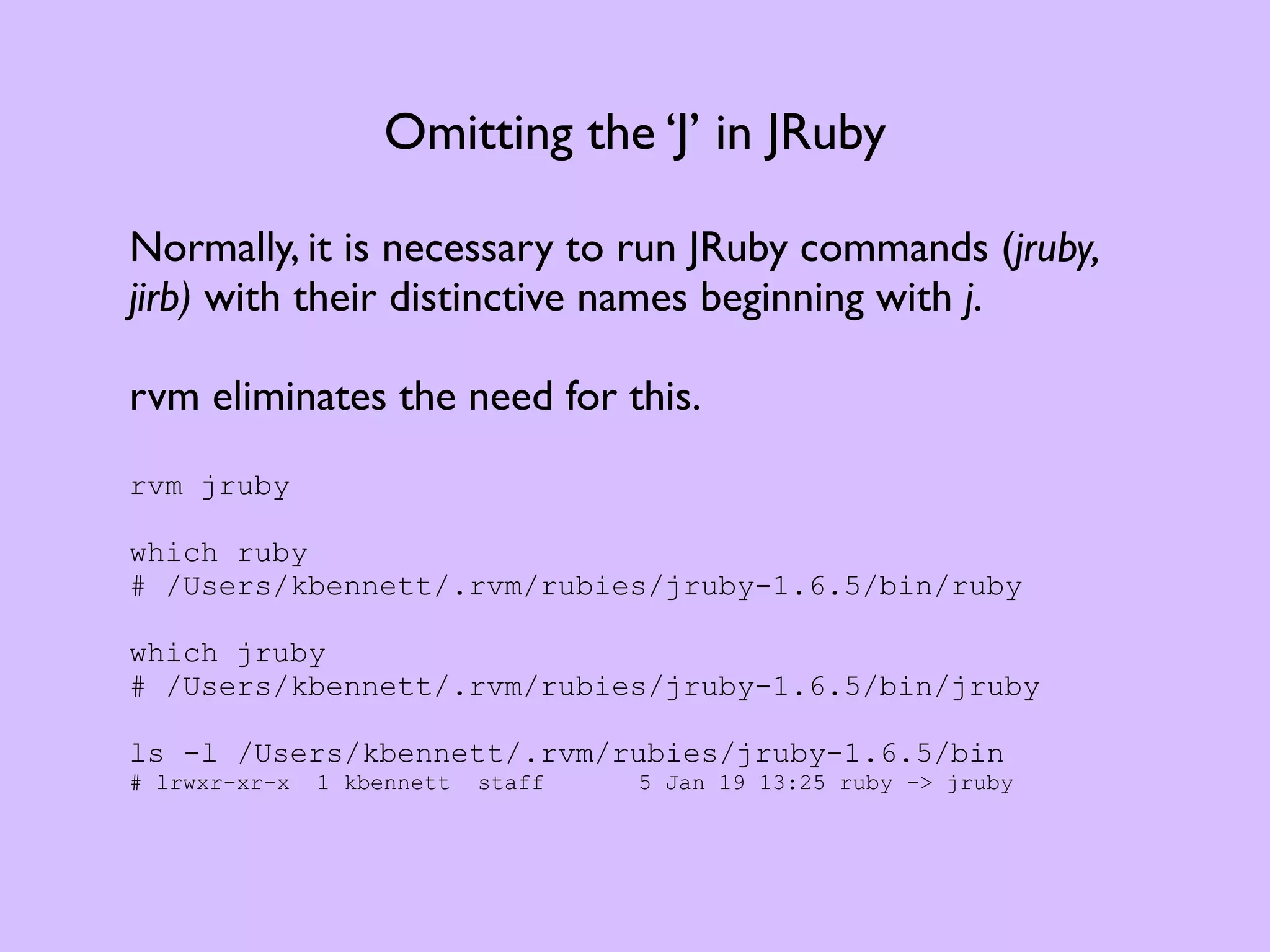
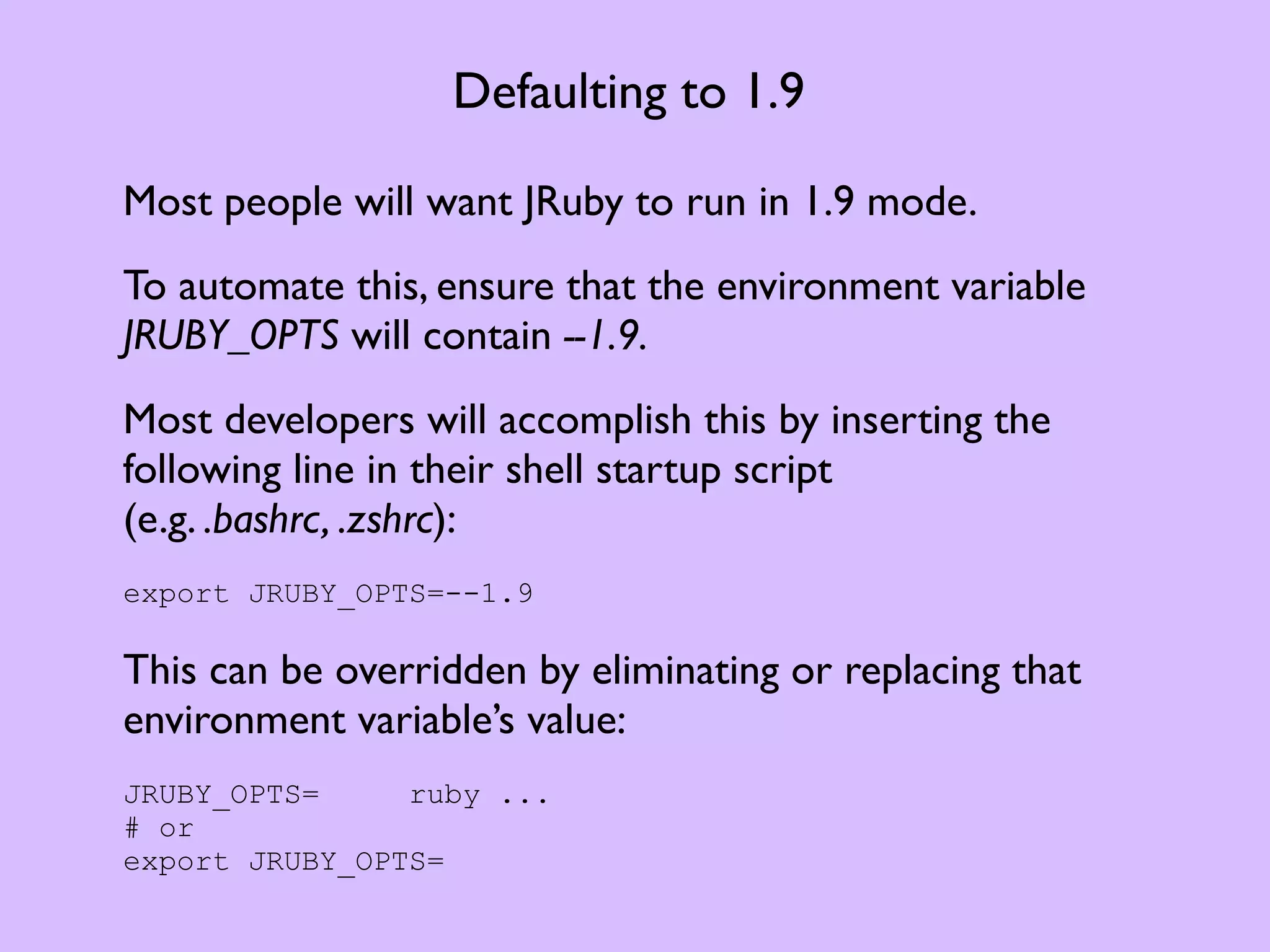

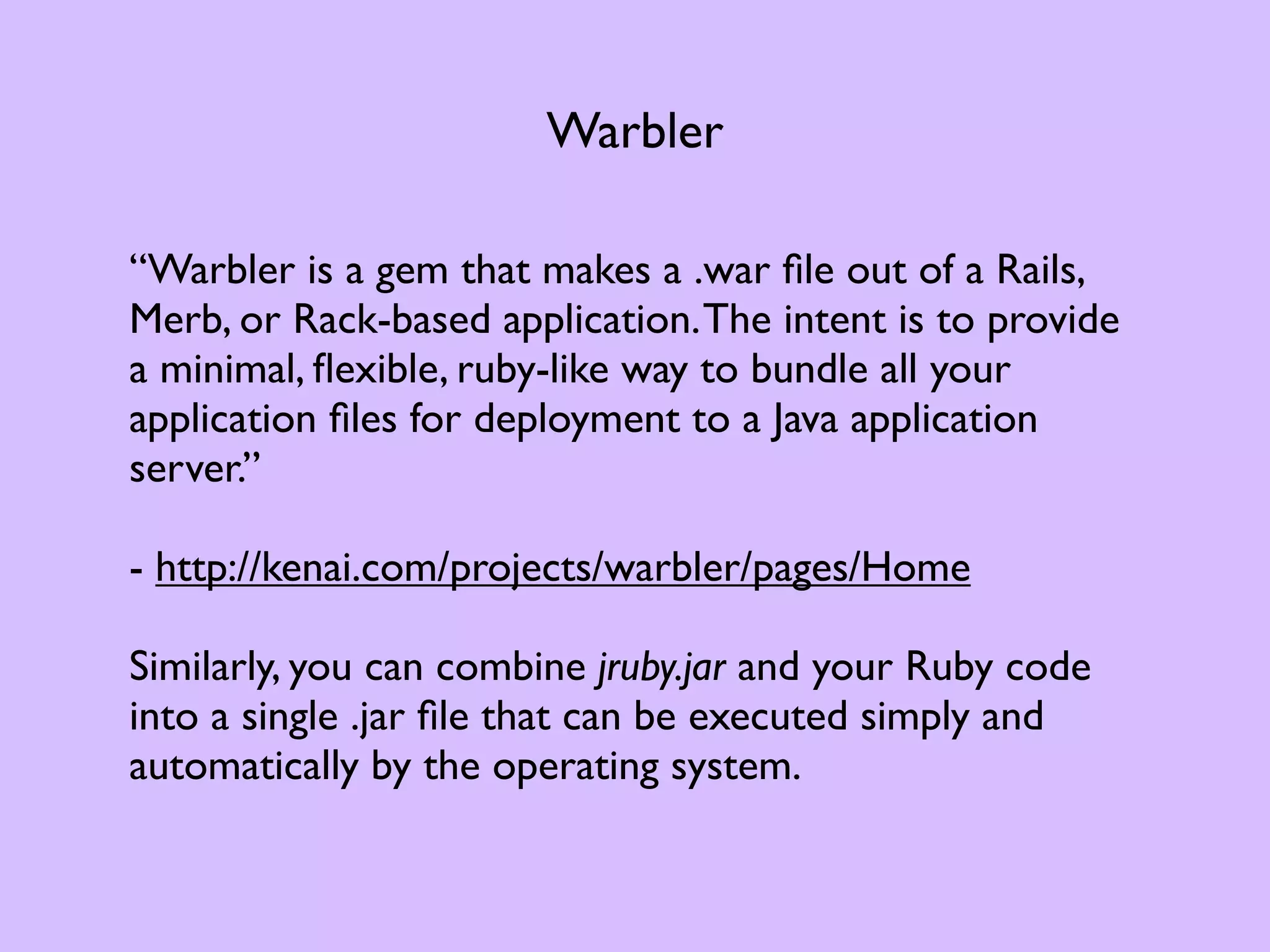

![Sample Multithreaded Program num_threads = 5 threads = [] (0...num_threads).each do |n| threads << Thread.new do loop { puts "#{' ' * (5 * n)}#{n}n" } end end threads.each { |thread| thread.join }](https://image.slidesharecdn.com/jruby-synergy-of-ruby-and-java-120428233726-phpapp02/75/Jruby-synergy-of-ruby-and-java-19-2048.jpg)

